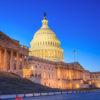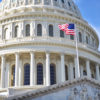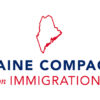Tourism and Hospitality
Date: May 22, 2012
International tourists, a potential economic boon, are being deterred from the US by American bureaucracy. And during peak season, businesses must be able to hire the immigrant staff they need.
Visitors already know that the United States has it all: beaches, mountains, world-class cities and shopping. That’s why in 2011, a record 62 million foreign tourists visited, spending $153 billion in travel and tourism-related goods.
But to keep this industry thriving, the U.S. must reduce the bureaucratic hurdles and headaches that discourage foreign tourists from visiting. Currently, Brazilian and Chinese visitors must wait about four months to receive tourist visas to the U.S. The CEO of Bloomingdales even urged the Obama Administration to cut down on these wait times for visitors from Brazil and China, and for good reason–the average Chinese tourist spends $6,000 while in the U.S., according to the Department of Commerce.
The tourism and hospitality industries do not only rely on foreign visitors, but they also rely on foreign-born workers, who staff their mountain resorts or beach towns during peak seasons. The Meadowmere Resort in Maine, for example, welcomes flocks of tourists during the summer, a time when the resort must hire at least 35 additional workers. The hotel can normally fill only about half of those open seasonal positions with local help, and it must hire temporary foreign workers to operate under H-2B visas. But the H-2B visa program is severely limited under current law. Only 66,000 H-2B visas are available each fiscal year, and the process for obtaining H-2B visas is often prohibitively difficult and costly, leaving tourist hot spots without adequate staffing.
Important facts about the foreign workers who work in season hospitality jobs:
- Adding more temporary immigrant workers under the H-2B program causes net positive job growth for Americans. 100 H-2B workers results in additional 464 jobs for US natives.


